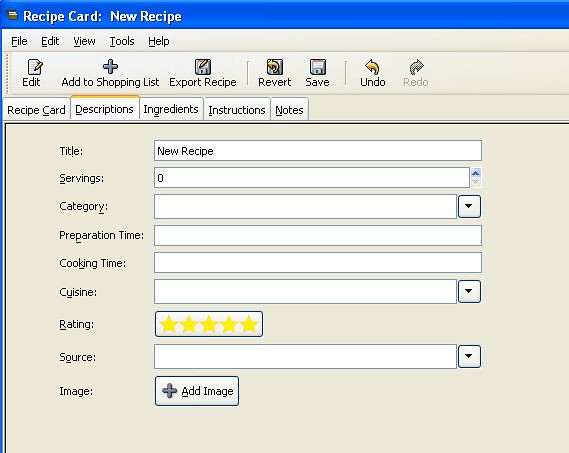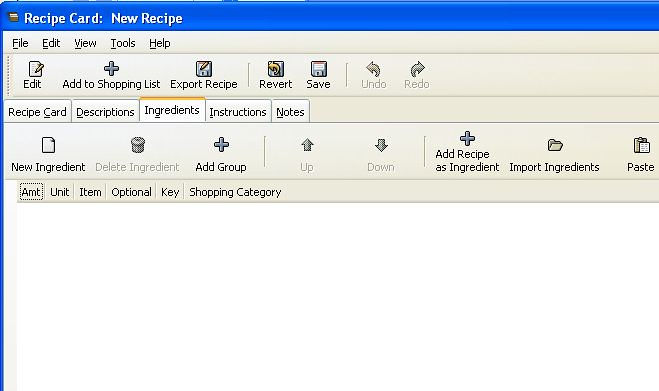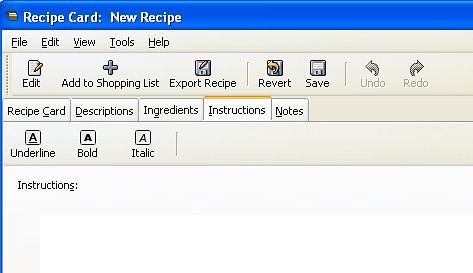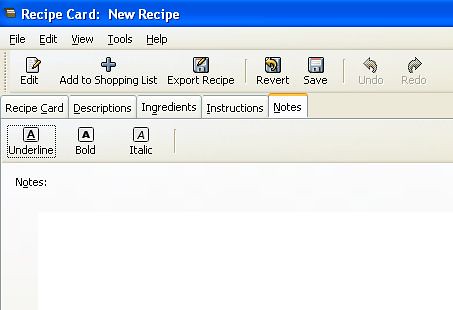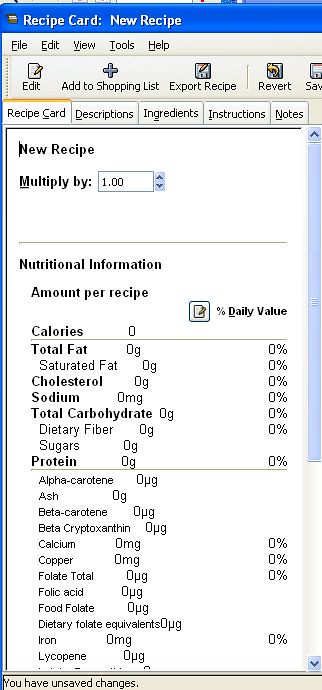If you’ve seen the various posts I’ve done over the past few weeks on structured blogging and it has all been a bit beyond you, please keep reading, this won’t be.
A discussion had started on the structured blogging mailing list about creating a format for structured recipes. The idea here is that all those people who publish recipes on their blogs would hopefully move to using a common format which provides structure where appropriate but still allows for each person to do things their own way. This provides benefits to both recipe writers and those of us who read and use them.
There are two reasons for this. One is that you end up with a nice simple form to fill out when typing up your recipe which will help ensure that you don’t leave out anything critical. But more importantly it will enable a new breed of search tool or recipe web-site which can trawl all of the blogs out there and provide recipes to end-users which are a much closer match to what they want than typing “chicken recipes” on Google.
With any approach which applies structure where there was none previously, the critical success factor is finding the right balance between structured information and free-form information. Add too much structure and it inhibits you, add too little and it provides no gain.
So I am throwing this question out to everyone. It doesn’t matter if you have written your own cookbook or have only ever read how to cook spaghetti from the back of the packet. What information do you think would be useful to have structured in a recipe on a blog or web-site?
To aid the thinking process, I have done some screenshots from a very nice Recipe Management Tool called Gourmet Recipe Manager. Even if you have no interest in this post, I recommend you check the tool out. The screenshots are of the windows it displays to enable you to enter a new recipe. So have a good look at those and let me know which fields you think are important to be kept “separate” from the main recipe description.
One way of thinking about it would be to imagine what you would search for if you were on a recipe search site. Is it “main ingredient” or “overall time” or “ethnicity” or “main vs sweet” or “ballpark cost” or “skill required”. There are a ton of possibilities but the idea is to find the really critical ones and work from there.
So all you lurkers who read this blog (including the 300 who suddenly appeared from the BBC2 web-site last Thursday - and I’m still trying to figure out why), de-lurk and post your opinions. This is one of those cases where no-one is wrong and all opinions are equally valuable.
There are some techie aspects to this which I will only mention in passing. Skip this paragraph if you are not technically inclined: An XML format was developed in 2002 called RecipeML to allow different software packages to swap recipes. Unfortunately, it looks like it never took off but that should not detract from the technical quality of the idea. It may form a strong basis for the under-the-hood aspects of this discussion. Having said that, Troy Hakala (one of the original authors of the format) pooh-poohed the idea of trying to do anything with recipes scattered across millions of blogs back in 2003! He does this as a comment to a post on the OxDECAFBAD Blog. it is worth reading that original post and his reply to see how much things have changed in the blog world since November 2003. Back then, Troy effectively came up with the same idea as Edgeio (but thought it made no sense).
Anyway, techies and non-techies, foodies and non-foodies, have a look at these, have a think and post a comment.
[tags]Structured Blogging, StructuredBlogging.org, RecipeML, Recipes, Microformats, Gourmet Recipe Manager[/tags]
comments powered by Disqus
